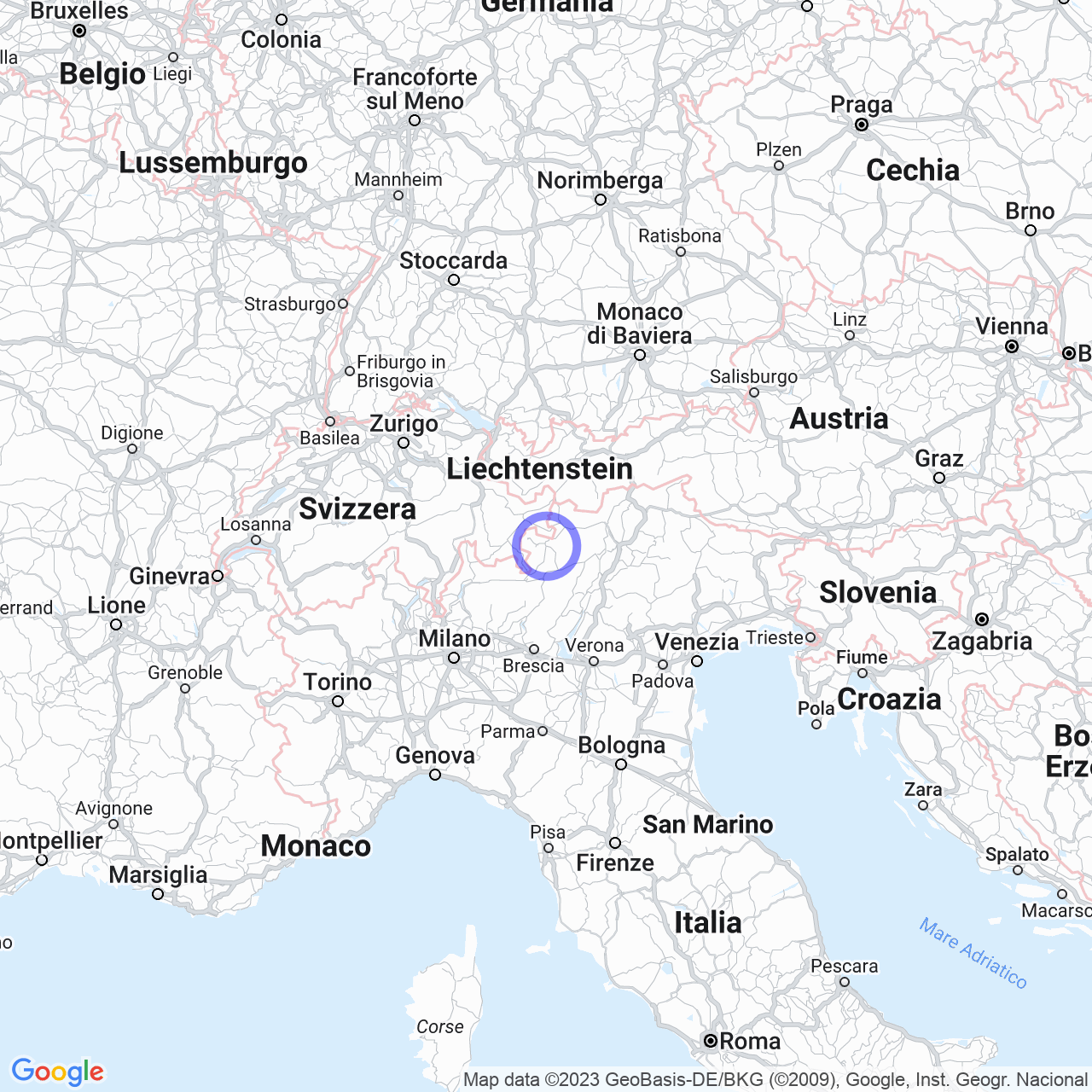Bormio
Bormio, a welcoming city in high Valtellina
Bormio is a municipality in the province of Sondrio, located in high Valtellina. With its 3,966 inhabitants, it is a renowned tourist destination both in summer and winter. Over the centuries, the Bormio basin was carved by glaciers and watercourses, surrounded by mountains that form a barrier of limestone and dolomite, whose main peak is the "Reit" (3,075 m). It protects from the North winds and characterizes the area entirely surrounded by river valleys.
In this guide, we explore the city of Bormio, its physical geography, climate, botany, and origins.
Physical geography

Territory
The Bormio basin is wide and bright; it is surrounded by mountains that form a barrier of limestone and dolomite towards the North, whose main peak is the "Reit" (3,075 m). It protects from the North winds and characterizes the area, being entirely surrounded by river valleys.
Four valleys converge here: Valdidentro, which connects it to the Foscagno Pass, crossed by the Viola stream, Valfurva, which connects it to the Gavia Pass, crossed by the Frodolfo, Valle del Braulio, which connects it to the Stelvio Pass, and Valdisotto, through which the Adda river flows towards the capital city of Sondrio.
Climate
The climate of Bormio is typically alpine, with harsh and snowy winters and mild and rather rainy summers. The winter snow gives the landscape an enchanting beauty and creates ideal conditions for skiing.
Botany
Bormio has one of the largest and richest botanical gardens in the Italian and non-Italian Alps. It hosts several plant species, including a station of Maiden Hair (''Adiantum capillus-veneris''), which is the highest in Europe. In the park of the Grand Hotel Bagni Vecchi, there is a small colony of Swiss Stone Pine (''Pinus engadiniensis''), unique outside the Swiss valley.
Origins of the name
The name Bormio derives from the Gallic term ''bormo'' = "hot spring" or from the German "warm" = hot, like the thermal waters. In fact, Bormio is also known for its spas, mentioned by Pliny the Elder in the 1st century AD. The thermal establishments are three: the Terme di Bormio, located in the territory of Bormio, and two establishments, the Bagni di Bormio, located in the fraction of Premadio in the neighboring municipality of Valdidentro.
History
Bormio constitutes a unified region whose physical characteristics have contributed to determining a unique history, a common ethnographic imprint, and similar living conditions. The first mention of Bormio in ancient documents occurs in a letter from Cassiodorus. During the Middle Ages, Bormio was the seat of the eponymous County, comprising the territories that correspond to the municipalities of Valfurva, Valdidentro, and Livigno.
Bormio has great historical importance thanks to its strategic position for trade since the Middle Ages, hence it is rich in important architectural, artistic, and cultural testimonies.
Conclusions
Bormio is a city circumscribed by mountains, standing out on a wide and bright basin. It is characterized by its alpine climate and the presence of a great variety of plants, in addition to the thermal waters that gave rise to its name. It is a city with great historical and cultural importance, with architectural and artistic testimonies that tell its story. We recommend visiting Bormio to immerse yourself in its beauty and discover its peculiarities.
